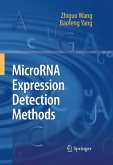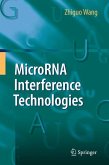MicroRNA Protocols provides diverse, novel, and useful descriptions of miRNAs in several species, including plants, worms, flies, fish, chicks, mice, and humans. These include some useful adaptations and applications that could be relevant to the wider research community who are already familiar with the identification of miRNAs. This volume will stimulate the reader to explore diverse ways to understanding the mechanism in which miRNAs facilitate the molecular aspects of the biomedical research. It is now known that microRNA (miRNA), once thought to be junk, can suppress the expression of other genes and may be involved in numerous cellular processes, including cell proliferation, apoptosis, cell differentiation, and development. In MicroRNA Protocols, expert miRNA researchers explain its basic concepts and introduce the most advanced technologies and techniques for predicting screening, isolating, and assaying it. The authors provide diverse, novel, and useful descriptions of miRNAs in several species-including plants, worms, flies, fish, chicks, mice, and humans-and show how they have been employed to develop miRNA as a potential drug design tool. Highlights include miRNA and their target prediction by computer analysis, functional assays of miRNA in vitro and in vivo, and transgenic animal models using miRNA technologies. Additional chapters cover gene regulation, small RNA function, RNA interference mechanisms, and transgenetics. The protocols follow the successful Methods in Molecular Biology series format, each offering step-by-step laboratory instructions, an introduction outlining the principles behind the technique, lists of the necessary equipment and reagents, and tips on troubleshooting and avoiding known pitfalls.
Eminently practical and cutting-edge, MicroRNA Protocols affords biomedical researchers readily reproducible techniques to understand and study the molecular pathogenesis of disease and design new therapeutic strategies.
Eminently practical and cutting-edge, MicroRNA Protocols affords biomedical researchers readily reproducible techniques to understand and study the molecular pathogenesis of disease and design new therapeutic strategies.








